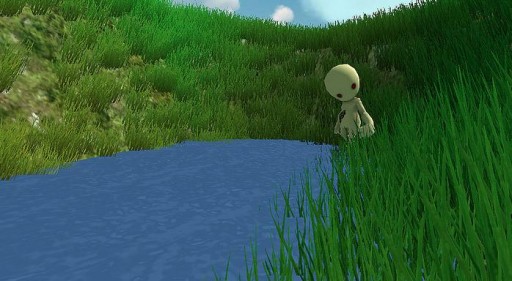A video game that teaches how to program in Java
April 10, 2013
CodeSpells, an immersive, first-person player video game designed to teach students in elementary to high school how to program in the popular Java language, has been developed by University of California, San Diego computer scientists.
The researchers tested the game on a group of 40 girls, ages 10 to 12, who had never been exposed to programming before. In just one hour of play, the girls had mastered some of Java’s basic components and were able to use the language to create new ways of playing with the game.
“CodeSpells is the only video game that completely immerses programming into the game play,” said William Griswold, a computer scientist at the Jacobs School of Engineering at UC San Diego.
The UC San Diego computer scientists plan to release the game for free and make it available to any educational institution that requests it. Researchers are currently conducting further case studies in San Diego elementary schools.
Teaching computer science below the college level is difficult, mainly because it is hard to find qualified instructors for students in elementary to high school, Griswold said. So he and his graduate students set out to find a way to reach these students outside the classroom. They designed the game to keep children engaged while they are coping with the difficulties of programming, which could otherwise be frustrating and discouraging.
Teaching children how to program must be a priority in a society where technology is becoming more and more important, said Sarah Esper, one of the lead graduate students on the development of CodeSpells. Programming also teaches logical thinking, said Stephen Foster, another lead student.
“We’re hoping that they will get as addicted to learning programming as they get addicted to video games,” Foster said.
How CodeSpells works
CodeSpells’ story line is simple: the player is a wizard arriving in a land populated by gnomes. The gnomes used to have magic, but lost it at some point. The wizard must help them. She (or he) writes spells in Java. Players have seven spells available to them, including levitating objects within the game, flying and making fire.
Players can also earn badges by undertaking simple quests, which help them master the game’s spells. One quest entails crossing a river. Another entails rescuing a gnome from the roof of his cottage, where he got stuck. Yet another entails starting a large bonfire. By the time players complete the game’s first level, they have learned the main components of the Java programming language, such as parameters, for if statements, for loops and while loops, among other skills.
Computer science learning theory
CodeSpells was influenced by research that Esper and Foster conducted on how successful programmers learn their trade. They surveyed 30 computer scientists and identified five characteristics that are key to learn programming outside a classroom setting: activities must be structured by the person who is trying to learn; learning must be creative and exploratory; programming is empowering; learners have difficulty stopping once they start; and learners spend countless hours on the activity.
Researchers summarized these findings in their SIGCSE 2013 paper, humorously titled “On the Nature of Fires and How to Spark Them When You’re Not There.”
Esper will present her CodeSpells work April 18 at Research Expo at the Jacobs School of Engineering at UC San Diego.

